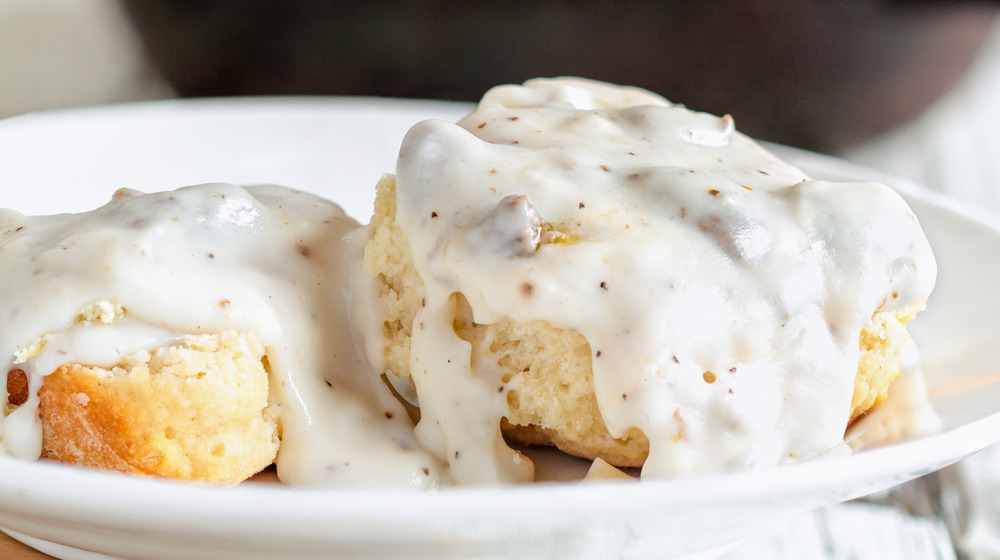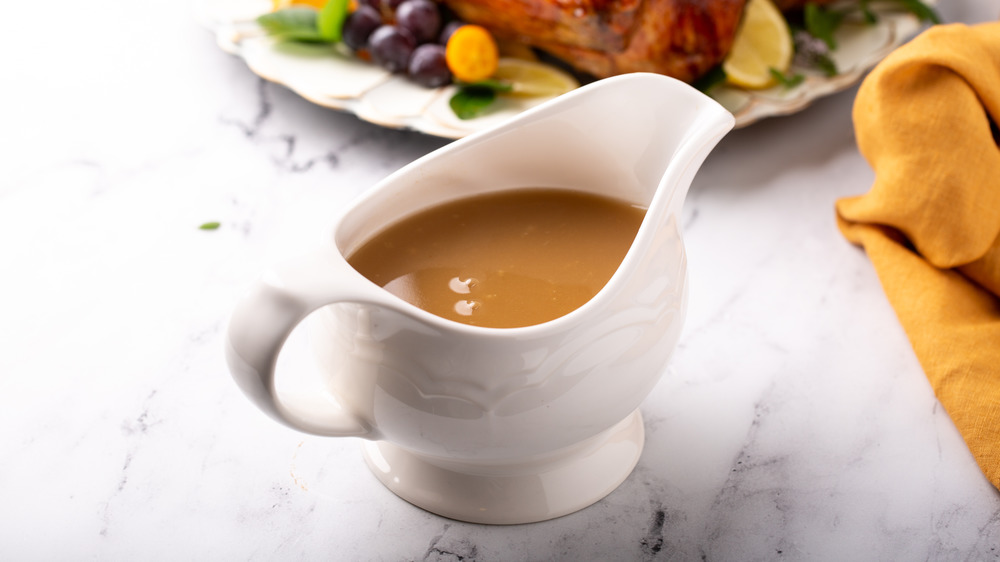The Real Difference Between White Gravy And Brown Gravy
There are two kinds of gravy lovers: Those who hear "gravy" and think of the lightly colored, super creamy sauce atop chicken-fried steak or buttermilk biscuits, and those who instead picture a Thanksgiving turkey or Sunday roast smothered in an amber-hued elixir. Both are called gravy and served with special occasion dishes, but a few key differences give them alternate names, tastes, and colors. What are they?
White gravy has humble origins, according to the book Southern Food by John Egerton. In Civil War-era Kentucky, sawmill crews often breakfasted on coffee, biscuits, and a gravy made from meat drippings, thickened with cornmeal, and finished with milk. According to Egerton, the gritty, "sawdusty" consistency of the gravy (and its popularity among sawmill crews) earned the sauce its other name, sawmill gravy. Made from scraps of meat and a touch of dairy, it was appreciated as an inexpensive yet rib-sticking way to start the day.
Today, it's more common to thicken white gravy with flour instead of cornmeal, but the rest of the steps remain the same. Cooks start with a hot skillet of sausage, bacon, or chicken drippings (and maybe an extra pat of butter), stir in flour to make a roux, and complete the sauce by slowly whisking in whole milk, according to The Spruce Eats. Extra points if you add crumbled breakfast sausage, as is tradition in the South.
Unlike white gravy, brown gravy contains broth instead of milk
The ingredients list for brown gravy is similar to the one for white gravy. You need meat drippings, butter, and flour — but instead of adding milk or cream, you incorporate broth to give the sauce its signature golden-brown color and relatively lighter consistency. The Food Network's classic turkey gravy, for example, begins with a roux made from fatty turkey drippings and all-purpose flour. Homemade turkey broth finishes the brown gravy, which simmers until thick enough to coat a spoon but viscous enough to flow easily from a gravy boat and onto a plate of turkey and potatoes.
The formula for brown gravy is a also bit freer than the one for white gravy. Some cooks like to add umami with a splash of Worcestershire or soy sauce, as shown in Food Network recipes, or additional flavor with minced herbs, as suggested by The Kitchn. The most typical variation among white gravies, however, is simply sausage or no sausage, as exemplified by recipes from The New York Times and Food52. Despite their differences, both versions require meat drippings and a solid roux, so if you're hoping for a seat on the gravy train, grab equal parts fat and flour and get to whisking.

